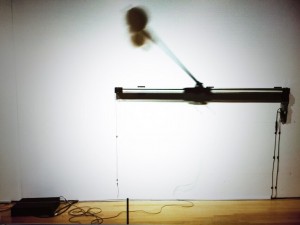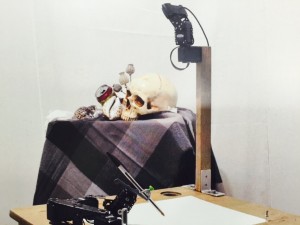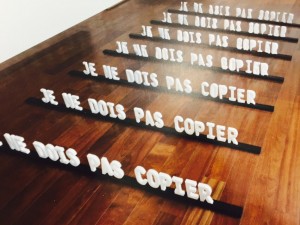Reading The Sirens’ Call by Chris Hayes for the Telegraph, 15 February 2025
It seems to me, and might seem to you, as though headlines have always ticked across the bottom of our TV screens during news broadcasts. Strange, how quickly technological innovations lose their novelty. In fact, this one is only 23-and-a-half years old: the “ticker” was reserved for sports scores until the day in 2001 when two hijacked passenger jets were flown into New York’s World Trade Center. Fox News gave its ticker over to the news service that day, and MSNBC and CNN quickly followed. Cable channels, you might say, quickly and seamlessly went from addressing their viewers’ anxieties to stoking them.
That’s Chris Hayes’s view, and he should know: the political commentator and TV news anchor hosts a weekday current affairs show on MSNBC. The Sirens’ Call, his new book, is first of all an insider’s take on the persuasion game. Hayes is a hard worker, and a bit of a showman. When he started, he imagined his regular TV appearances would bring him some acclaim. “And so,” he writes, “the Star seeks recognition and gets, instead, attention.” This experience is now common. Thanks to the black mirrors in our pockets, we’re now all stars of our own reality TV show.
To explain how he and the rest of smartphone-wielding humanity ended up in this peculiar pickle – “akin to life in a failed state, a society that had some governing regime that has disintegrated and fallen into a kind of attentional warlordism” – Hayes sketches out three kinds of attention. There’s the conscious attention we bring to something: to a book, say, or a film, or a painting. Then there’s the involuntary attention we pay to environmental novelties (a passing wasp, a sudden breeze, an unexpected puddle). The more vigilant we are, the more easily even minor stimuli can snare our attention.
This second kind is the governing principle of advertising, an industry that over the last two decades has metastasised into something vast and insidious: call it “the attention economy”. Everything is an advertisement now, especially the news. The ticker and its evolved cousins, the infinitely-scrolling feed (think X) and the autoplaying video-stream (think TikTok) exist to maintain your hypervigilance. You can, like Hayes, write a book so engaging that it earns the user’s conscious focus over several hours. If you want to make money, though – with due respect to Scribe’s sales department – you’re better off snaring the user’s involuntary attention over and over again with a procession of conspiracy theories and cat videos.
The third form of attention in Hayes’s typology is social attention: that capacity for involuntary attention that we reserve for events relating specifically to ourselves. Psychologists dub this the “cocktail-party effect”, from our unerring ability to catch the sound of our own name uttered from across a crowded and noisy room. Social attention is extraordinarily pregnant with meaning. Indeed, without a steady diet of social attention, we suffer both mentally and physically. Why do we post anything on social media? Because we want others to see us. “But,” says Hayes, “there’s a catch… we want to be recognised as human by another human, as a subject by another subject, in order for it to truly be recognition. But We Who Post can never quite achieve that.”
In feeding ourselves with the social attention of strangers, we have been creating synthetic versions of our most fundamental desire, and perfecting machines for the manufacture of empty calories. “This is the story of Donald Trump’s life,” Hayes explains, by way of example: “wanting recognition, instead getting attention, and then becoming addicted to attention itself, because he can’t quite understand the difference, even though deep in his psyche there’s a howling vortex that fame can never fill.” Elon Musk gets even harsher treatment. “What does the world’s richest man want that he cannot have?” Hayes wonders. “What will he pay the biggest premium for? He can buy whatever he desires. There is no luxury past his grasp.” The answer, as Musk’s financially disastrous purchase of Twitter demonstrates all too clearly, and “to a pathological degree, with an unsteady obsessiveness that’s thrown his fortune into question, is recognition. He wants to be recognised, to be seen in a deep and human sense. Musk spent $44 billion to buy himself what poor pathetic Willy Loman [in Arthur Miller’s play Death of a Salesman] couldn’t have. Yet it can’t be purchased at any sum.”
We’re not short of books about how our digital helpmates are ushering in the End of Days. German psychologist Gerd Gigerenzer’s How to Stay Smart in a Smart World (2022) gets under the hood of systems that ape human wisdom just well enough to disarm us, but not nearly well enough to deliver happiness or social justice.The US social psychologist Jonathan Haidt took some flak for over-egging his arguments in The Anxious Generation (2024), but the studies he cites are solid enough and their statistics amount to a litany of depression, self-harm and suicide among young (and predominantly female) users of social media. In Unwired (2023), Gaia Bernstein, a law professor at Seton Hall University in New Jersey, explains how we can (and should) sue GAMA (Google, Amazon, Meta, Apple) for our children’s lost childhood.
Among a crowded field, Hayes singles out Johann Hari’s 2022 book Stolen Focus for praise, though this doesn’t reflect well on Hayes himself, whose solutions to our digital predicament are weak beer compared to Hari’s. Hari, like Gigerenzer and Bernstein, had bold ideas about civil resistence. He used his final pages to construct a bare-bones social protest movement.
Hayes, by contrast, “fervently hopes” that the markets will somehow self-correct, so that newspapers, in particular, will win back their market share, ushering in an analogue, pre–attention age means of directing attention in place of the current attention-age version. “I think (and fervently hope) we will see increasing growth in businesses, technologies, and models of consumption that seek to evade or upend the punishing and exhausting reality of the endless attention commodification we’re living through,” Hayes says. But what evidence has he, that such a surprising reversal in our cultural fortunes is imminent? The spread of farmers’ markets in US cities and the resurgence of vinyl in record stores. I’d love to believe him, but if I were an investor I’d show him the door.
With so many other writers making analogous points with a near-revolutionary force, The Siren’s Call says more about Hayes than it does about our crisis. He’s the very picture of an intelligent, engaged liberal, and I came away admiring him. I also worried that history will be no kinder to his type than it was to the Russian liberals of 1917.




